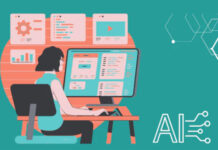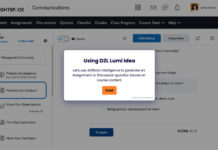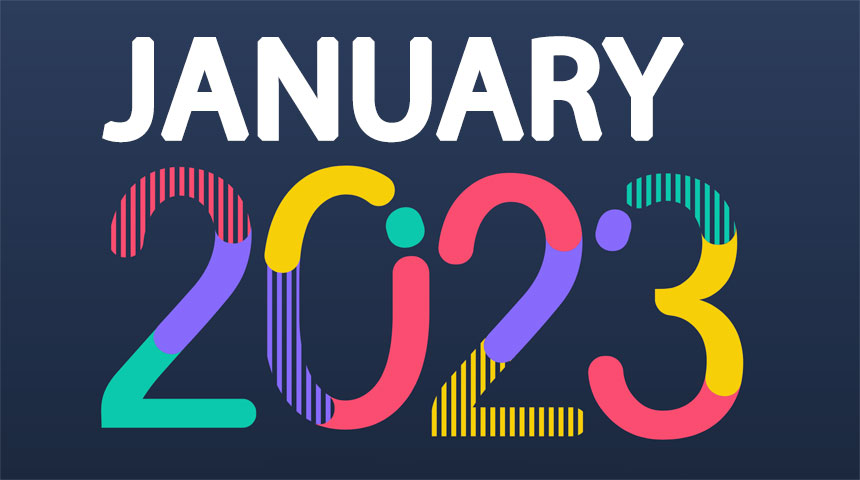Mikel Amigot, IBL News | New York
Anthropic released new research, in collaboration with Northeastern University, this week on how educators utilize AI. The company analyzed 74,000 anonymized conversations from higher education professionals on Claude.ai in May and June of this year.
Survey’s findings reveal how AI adoption is expanding and driving a pedagogical shift as educators utilize these tools to create tangible educational resources.
A recent Gallup survey noted that AI tools save teachers an average of 5.9 hours per week.
• The report found that educators use AI for designing lessons and developing course materials, writing grant proposals, advising students, and managing administrative tasks such as admissions and financial planning.
• The most prominent use is curriculum development, followed by conducting academic research and assessing student performance, as the second and third most common uses. Educators find AI useful for providing students and me with individualized, interactive learning experiences that go beyond what one instructor could offer.
Grading
However, AI for grading and evaluation is less frequently used, as it is perceived as the least effective, and it remains an ethically contentious issue. “Students are not paying tuition for the LLM’s time; they’re paying for my time. It’s my moral obligation to do a good job (with the assistance, perhaps, of LLMs),” said an instructor.
Anyway, some educators are heavily using it for automating assessment tasks, and it emerges as the second most automation-heavy task.
This includes subtasks such as providing feedback on student assignments and grading their work using rubrics.
Claude Artifacts
Faculty is using Claude Artifacts to create interactive and engaging educational materials for student development, such as chemistry simulations, data visualization dashboards, grading rubrics, podcasts, and videos.
The report shows the following creations:
> Data visualization: interactive displays to help students visualize everything from historical timelines to scientific concepts
> Assessment and evaluation tools: HTML-based quizzes with automatic feedback systems, CSV data processors for analyzing student performance, and comprehensive grading rubrics
> Subject-specific learning tools: specialized resources like chemistry stoichiometry games, genetics quizzes with automatic feedback, and computational physics models
> Interactive educational games: web-based games, including escape rooms, platform games, and simulations that teach concepts through gamification across various subjects and levels
> Academic calendars and scheduling tools: interactive calendars that can be automatically populated, downloaded as images, or exported as PDFs for displaying class periods, exam times, professional development sessions, and institutional events
> Budget planning and analysis tools: budget documents for educational institutions with specific expense categories, cost allocations, and budgetary management tools
> Academic documents: meeting minutes, emails for grade-related communications and academic integrity issues, recommendation letters for faculty awards, tenure appeals, grant applications, interview invitations, and committee appointments
Other Uses
Other interesting uses discovered in the Claude.ai data include:
- Create mock legal scenarios for educational simulations.
- Develop vocational education and workforce training content;
- Draft recommendation letters for academic or professional applications;
- Create meeting agendas and related administrative documents.
Trends
Claude.ai data note tasks that will augment along the way, such as creating educational and practice materials, writing grant proposals to secure external funding, academic advising and student organization mentorship, and supervising student academic work.
In addition, educators will likely delegate tasks to AI, including managing institutional finances and fundraising, maintaining student records, evaluating academic performance, advising on doctoral-level academic research, and managing academic admissions and enrollment.
Many AI interactions will often require significant context and thus collaboration between the AI and the professor.
Many educators recognize that AI is putting pressure on them to change the way, what, and how they teach and how they conduct assessments.
In coding, for example, according to one professor, “AI-based coding has completely revolutionized the analytics teaching/learning experience. Instead of debugging commas and semicolons, we can spend our time talking about the concepts around the application of analytics in business.”
In one particular Northeastern professor’s case, they shared that they “will never again assign a traditional research paper” after struggling with too many students submitting AI-written assignments. Instead, they shared: “I will redesign the assignment so it can’t be done with AI next time.”
Campus Technology: Top 3 Faculty Uses of Gen AI
- Developing curricula (57%). Common requests included designing educational games, creating interactive tools, and creating multiple-choice assessment questions.
- Conducting academic research (13%). Common requests included supporting bibliometric analysis and academic database operations, implementing and interpreting statistical models, and revising academic papers in response to reviewer feedback.
- Assessing student performance (7%). Common requests included providing detailed feedback on student assignments, evaluating academic work against assessment criteria, and summarizing student evaluation reports.

 En Español
En Español












![OpenAI Released Apps that Work Inside ChatGPT and an SDK [Video]](https://iblnews.org/wp-content/uploads/2025/10/openaieventday-218x150.jpg)








